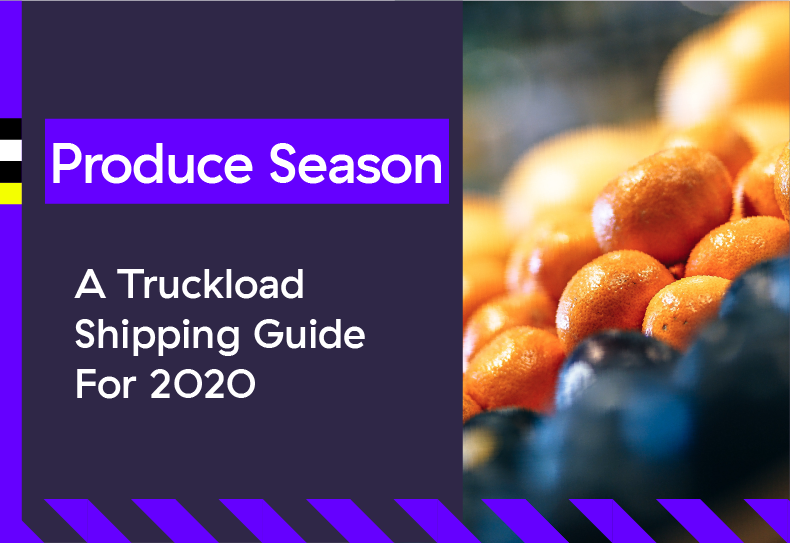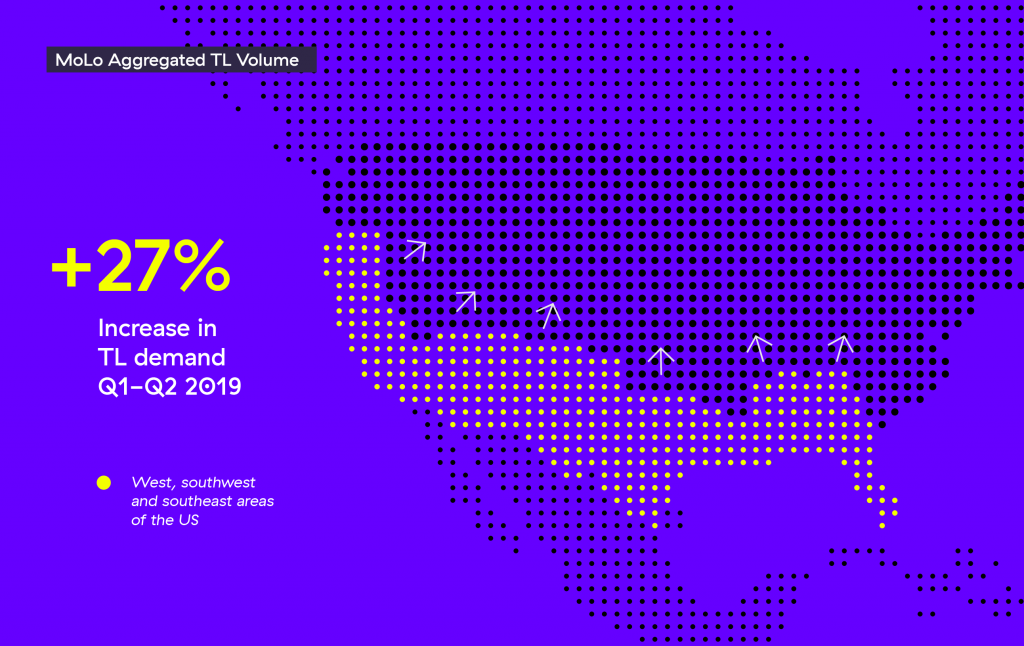Produce Season 2020: A Truckload Shipping Guide

While the spread of COVID-19 has certainly been the primary industry focus for the trailing 3-4 months, reoccurring seasonal events present new waves of challenges and opportunities for shippers of all sizes. As we enter the spring and summer months, typically, a surge in freight demand is observed in the marketplace due to one notable industry event that jumpstarts much of the transportation activity in early-mid Q2: produce season.
As consumers anxiously wait to be released from the confines of their homes to once again enjoy the beauty of the outdoors, demand for products and goods, like produce, continue to be shipped. Even with produce essential activities like picnics and backyard barbeques on hold for most of the country, the stockpiling of cabinets and fridges have kept demand for fruits and vegetables at a constant hum. For shippers, understanding the regions heavily impacted by the uptick in produce shipping as well as how carriers react to the heightened volumes is important to successfully navigate the ebbs and flows of the market. In addition, implementing supply chain best practices can help optimize and position facilities as a favored choice amongst preferred carriers.
What regions of the U.S. drive produce demand?
Year over year, two states generally serve as the primary contributors to produce’s impact on the truckload market. Florida and Texas drive much of the nation’s produce volume during the early spring months. With sudden surges in volume sweeping across these regions, challenges to source capacity and limit heightened costs can arise for shippers. For Florida, major port cities like Miami serve as the focal points to shipping in the southeast. As imports and local produce gradually take hold of the market during early Q2, shippers are challenged with competing for coverage as rate premiums for produce heighten costs in the surrounding areas and states. Through the spring and early summer months, outbound Florida freight will support much of the country’s produce demand until freight in outside markets begins to loosen with the rising temperatures.
It is important for shippers to understand the significant uptick in freight activity to properly forecast and prepare their supply chain for potential disruptions.
For Texas, the influx of produce from Mexico and Latin America will cause strains at southern shipping points across the state. Cities like Laredo and McAllen drive the majority of outbound produce demand, and capacity in nearby locations will tighten as carriers reposition fleets south to take advantage of the surplus volumes and rates. Like Florida, shippers can expect costs for non-produce goods and products to potentially rise in these areas due to the spiked demand.
Arizona and California also deserve recognition. As the states that lead the demand for the western regions of the country, border cities experience significant increases in volume during this time of the year. As produce from Mexico crosses over into the U.S., freight moves up the western coast to support states in the pacific northwest as well as shipments reaching the mountain west.
With more freight available in the southeast, southwest, and west areas of the country, these regions become the early hotbeds of opportunity for carriers.
Referencing MoLo’s Regional TL Volume from Q1-Q2 2019, demand rose 27% across the west, southwest, and southeast areas of the US, making these states and surrounding regions pivotal in measuring the marketplace volatility during Q2. It is important for shippers to understand the significant uptick in freight activity to properly forecast and prepare their supply chain for potential disruptions.

As freight volumes increase, how will carrier fleet strategies change?
To take advantage of the rise in shipments, carriers will make equipment alterations to make them suitable to haul certain types of produce. Outfitting dry van trailers with vents is a common practice during the season as well as some carriers switching out for refrigerated trailers to profit on the heightened demand for temperature-controlled coverage.
Fleets will also reposition their drivers to high-volume produce shipping lanes. To capture premiums on outbound shipments from produce heavy states, carriers will be more willing to haul inbound shipments at compressed rates as to not lose out on outbound rate inflations.
Establishing new revenue streams could be the new initiative for decision-makers as we cross the halfway point in the quarter.
Will COVID-19 have an impact on this year’s produce season?
COVID-19 has impacted supply chains across the globe for various industries, and the outlook for the U.S. truckload market remains widely uncertain. Specific to produce, favorable winter weather in produce states bodes well to have a strong season in 2020 and could look more favorable to carriers with other industries still on standby. However, as the general economy looks to rebound from the pandemic, shipping rates may not elevate to historical highs, thus, pushing baseline rates lower. While food will continue to grow, and consumers will continue to stockpile homes with fresh fruits and vegetables, small to mid-sized produce shippers could be challenged with locating new business opportunities to sell their crops. The closing of schools and restaurants, making up sizeable portions of business for shippers, hampered sales in the first part of the year. Establishing new revenue streams could be the new initiative for decision-makers as we cross the halfway point in the quarter.
What are the main takeaways?

Arizona, California, Florida, and Texas set the course for produce demand in the early part of the year. Look to these regions as key areas of interest through the spring and early summer months. As volumes gradually rise to make their way across the country, shippers in produce-heavy locations could experience competition to secure capacity for their shipments.

Dispatchers and fleet managers will outfit equipment and position drivers accordingly to reap the benefits of produce season. Having experienced a difficult start to 2020, carriers are eager to ramp up operations heading into summer. Produce season could be seen as a more favorable opportunity compared to years past as a result of other industries, not shipping products due to the pandemic.

COVID-19’s impact has shaken the truckload industry to its core. As it looks to resume full operation, small and medium-sized produce businesses may need to source new customers. Schools and restaurant closings have hurt sales and the time to sell to new markets in grocers or grocery-backed retail may be the new norm in the near future.

Do you have seasonal produce shipping needs?
MoLo’s flexible carrier network has the dry and refrigerated solutions to service your produce. Start shipping with MoLo by submitting a quote today.




